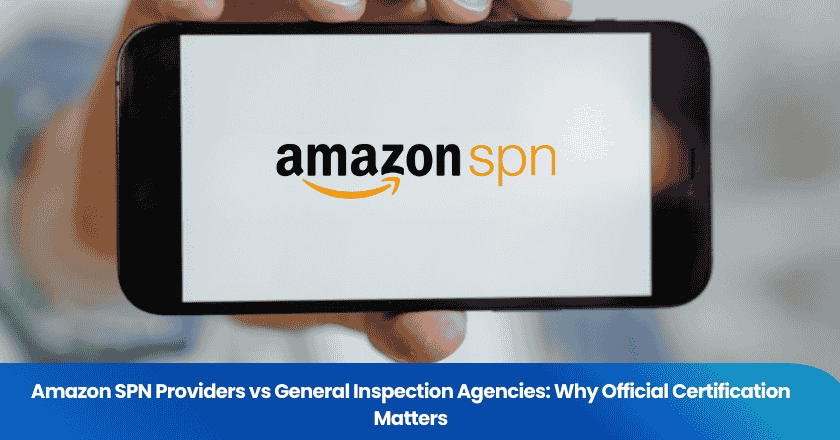
Quality control assurance means you set standards and monitor processes to ensure products or services meet expected quality levels. You gain value by understanding what is quality control assurance because it helps you reduce errors and improve reliability. Many industries now rely on automated systems and AI to boost quality, cut costs, and increase customer satisfaction.
Key Takeaways
- Quality control assurance helps you set standards and monitor processes to ensure products meet quality expectations.
- Implementing automated systems can reduce human errors in quality checks by up to 85%, leading to cost savings and improved customer satisfaction.
- Focus on prevention rather than correction. Early detection of issues saves time and resources, enhancing overall quality.
- Engage your entire team in quality processes. Everyone's involvement leads to better results and a culture of quality.
- Regularly review and adapt your quality processes. Continuous improvement helps maintain high standards and meet customer needs.
What Is Quality Control Assurance
Definition
When you ask what is quality control assurance, you look for a clear explanation of how organizations make sure their products or services meet high standards. In simple terms, quality assurance is a systematic process that helps you determine if a product or service meets specific requirements. This process sets and maintains requirements for developing or manufacturing reliable products. The quality assurance definition highlights a proactive approach. You focus on preventing problems before they happen, rather than just fixing them after they occur.
Quality assurance meaning goes beyond just checking finished products. You use it to design processes that consistently deliver quality results. International standards, such as ISO 9001:2015, guide you to put the customer first and improve your management practices. These standards help you build trust and loyalty by ensuring your products or services always meet expectations.
Quality control, on the other hand, is a methodical procedure you use to verify that a product or service aligns with established quality criteria. While quality assurance focuses on the process, quality control checks the final outcome. When you combine both, you create a strong system that supports continuous improvement and customer satisfaction.
Tip: If you want to understand what is quality control assurance, remember that quality assurance sets the rules and quality control checks if you followed them.
Key Principles
You need to follow several key principles to make quality control assurance effective. These principles help you maintain high standards and deliver consistent results.
1. Clear Documentation
You must document every step of your process. This makes it easy to track compliance and reduces errors. Good documentation helps everyone understand what is quality control assurance and how to apply it in daily work.
2. Thorough Testing at Every Stage
You should test your products or services at each stage of development. Early testing helps you catch issues before they become costly problems. This principle supports the proactive nature of quality assurance.
3. Continuous Improvement
You need to monitor your processes regularly and adapt them as needed. Continuous improvement means you never settle for "good enough." You always look for ways to raise your quality standards.
4. Customer Focus
You design your quality assurance process to meet customer needs and expectations. Satisfied customers trust your products and stay loyal to your business.
5. Prevention Over Correction
You aim to prevent defects rather than just fix them. By focusing on prevention, you save time, reduce costs, and deliver better quality.
Different industries apply these principles in unique ways:
- In manufacturing, you standardize production processes and inspect both materials and finished goods.
- In software development, you set coding standards and test early, while also fixing bugs before release.
- In healthcare, you establish patient safety protocols and audit compliance.
- In pharmaceuticals, you ensure compliance with manufacturing practices and test products for quality.
- In construction, you manage projects and safety, then check materials and structural integrity.
When you understand what is quality control assurance, you see that these principles work together to create reliable products and services. You use quality assurance to set the foundation and quality control to verify results. This approach helps you build a reputation for excellence and keeps your customers coming back.
Quality Assurance Process
Methods
You play a key role in ensuring quality by following a structured quality assurance process. This process focuses on preventing defects before products or services reach your customers. You start by developing a quality assurance plan that outlines every step needed to achieve high quality. This plan emphasizes process design, documentation, and continuous monitoring.
Many industries rely on proven methods to maintain quality.
Here is a table summarizing some of the most widely used approaches:
| Method | Description |
|---|---|
| Six Sigma | A problem-solving method aimed at reducing defects and managing variations. |
| Lean | A management philosophy focused on eliminating waste to improve efficiency. |
| Kaizen | A continuous improvement approach involving all employees in the process. |
| Total Quality Management (TQM) | A company-wide mindset involving all departments to achieve quality goals. |
| Failure Testing | Tests products under extreme conditions to expose flaws. |
| Statistical Process Control | Uses statistical tools to identify and address quality issues. |
You use these methods to standardize your process, involve your team, and ensure everyone follows the same quality standards. By focusing on the process, you prevent defects rather than just reacting to them after they occur. You also meet regulatory requirements and manage risks more effectively.
Note: A strong quality assurance process includes process documentation, training, supplier management, and regular audits. These activities help you maintain consistency and deliver reliable results.
Tools
You rely on a variety of tools to support your quality assurance efforts. These tools help you identify issues early, track performance, and improve your process over time.
Here is a table highlighting some leading tools and their contributions to defect prevention:
| Tool Type | Contribution to Defect Prevention |
|---|---|
| Test Automation | Identifies defects quickly and reduces human error in testing. |
| Defect Management Tools | Provides real-time insights and predictive analytics to foresee issues. |
| Advanced Analysis Tools | Offers trend analysis and performance tracking to improve processes. |
You use test automation to speed up the quality assurance process and catch problems before they reach your customers. Defect management tools give you real-time data, so you can address issues as soon as they arise. Advanced analysis tools help you spot trends and predict where future problems might occur.
Regularly reviewing quality metrics allows you to identify bottlenecks and make informed decisions about process improvements. Digital platforms also enhance collaboration, support compliance, and help you adapt to new technologies without sacrificing quality.
Quality Control vs. Quality Assurance
Differences
You often hear the terms quality control and quality assurance used together, but they serve different purposes in your quality management system. Understanding the differences helps you apply the right approach at the right time. Quality assurance vs quality control centers on how you manage and deliver quality.
| Aspect | Quality Assurance (QA) | Quality Control (QC) |
|---|---|---|
| Approach | Proactive | Reactive |
| Focus | Process-oriented | Product-oriented |
| Responsibility | Entire team | Dedicated personnel |
| Objective | Prevent defects before they occur | Identify defects after they occur |
| Activities | Establishing standards and procedures | Testing and inspection of finished products |
Quality assurance focuses on building confidence that your processes will deliver the expected quality. You set up standards, create procedures, and involve your whole team. This proactive approach means you prevent problems before they reach your customers. In contrast, quality control is about checking the final product. You inspect, test, and measure to catch any defects that slipped through. The quality control definition highlights this reactive, product-oriented nature.
You can see the main points of quality assurance vs quality control in this list:
1. Quality assurance prevents defects; quality control finds them.
2. Quality assurance manages processes; quality control checks products.
3. Quality assurance involves everyone; quality control relies on specialists.
4. Quality assurance sets the rules; quality control verifies the results.
When you understand the quality control meaning, you realize it is about making sure the finished product meets your standards. Quality assurance vs quality control is not just a technical distinction—it shapes how you deliver consistent quality.
Overlaps
You might wonder where quality assurance vs quality control come together in your daily work. In practice, these two areas often overlap to create a complete quality system. Both aim to deliver the best possible results to your customers.
| Quality Assurance (QA) | Quality Control (QC) |
|---|---|
| Focuses on preventing defects | Identifies defects through inspections |
| Sets processes and standards | Checks if processes work by inspecting products |
| Aims to prevent issues | Finds any issues that occur |
| Results inform and improve processes | Results help improve QA processes |
You need both quality assurance and quality control to succeed. Relying only on quality control may mean you catch problems too late. Using only quality assurance can miss real-time issues. When you blend both, you act quickly on problems and refine your systems for the future. This combination ensures your quality stays high and your customers stay satisfied.
Tip: Think of quality assurance vs quality control as two sides of the same coin. One builds the system, the other checks the outcome. Together, they help you achieve reliable, consistent quality.
Applications
Industry Examples
You see quality control assurance in action across many industries. Each sector uses specific practices to deliver high-quality products and maintain strict quality standards.
 Learn more Industry quality control assurance cheklist
Learn more Industry quality control assurance cheklist
The table below highlights how different industries apply quality control assurance to protect consumers and ensure consistent results:
| Industry Sector | Quality Control Practices |
|---|---|
| Dairy | Implementing pasteurization processes and regular microbial testing. |
| Meat | Conducting audits to identify and control potential contamination risks. |
| Food and Beverage | Using filtration and sterilization techniques to prevent microbial growth. |
| Bakery | Monitoring baking times and temperatures to ensure thorough cooking. |
| Seafood | Ensuring proper handling and storage temperatures to prevent histamine development. |
You measure the success of these quality programs using clear metrics. Common metrics include on-time audit completion rates, defect rates, and customer satisfaction scores. You also track the number of non-compliances per area, the percentage of non-compliances receiving follow-up, first-pass yield, scrap and rework rates, and on-time delivery performance. These metrics help you maintain high-quality products and improve your processes over time.
Tip: Define clear objectives for your quality metrics. Choose relevant metrics that align with your goals. Use technology for data collection and analysis. Set baselines and targets, then monitor progress and refine your strategies regularly.
Everyday Use
You apply quality control assurance in your daily life, even outside of work. You might use statistical process control when you monitor the quality of a home project in real time. Adopting a mindset of total quality management helps you improve personal habits or manage your family more effectively. Checklists serve as a simple tool to ensure you complete every step in your daily tasks, which boosts your productivity and helps you achieve high-quality results.
- Use checklists to track daily chores and avoid missing important steps.
- Monitor your progress on personal projects to maintain quality.
- Embrace continuous improvement by reviewing your routines and making small changes for better outcomes.
You build a habit of focusing on quality in everything you do. This approach ensures you deliver high-quality products at work and maintain high standards in your personal life.
Quality Management Importance
Benefits
You gain significant advantages when you implement a robust quality management system. Quality management drives your organization to meet customer expectations and maintain high standards. You use quality assurance and quality control to build trust and deliver consistent results. A strong quality management system helps you capture feedback, guarantee consistency, and integrate customer requirements. This approach leads to repeat business and loyalty.
You see quality management reflected in daily operations. Quality assurance and quality control work together to ensure consistency, resolve problems, and deliver a better user experience. You build customer confidence and reinforce your reputation by maintaining high quality.
- Consistency in product quality boosts customer confidence.
- Early problem resolution improves product quality and strengthens your image.
- Reliable products meet expectations, leading to loyalty and satisfaction.
Risks
Neglecting quality management exposes you to serious risks. You face operational disruptions, financial losses, and reputational damage if you ignore quality control assurance. Poor documentation and lack of oversight can cause manufacturing problems and varying product quality. You may encounter fines, sanctions, and even operational shutdowns imposed by regulatory authorities.
You risk civil and criminal liabilities when you fail to comply with regulations. Regulatory authorities may impose penalties, including operational restrictions. Financial impact can be substantial. Many companies struggle to quantify the cost of poor quality management. On average, organizations lose 2.7% of revenue due to poor quality. Most quality costs go toward dealing with issues rather than prevention.
Tip: You protect your business and reputation by investing in quality management. Prevention programs offer the greatest potential for savings and long-term success.
You strengthen your organization by applying quality control assurance, quality assurance, and quality control. These practices help you monitor operations, identify issues, and prevent compliance problems.
| Key Takeaway | Description |
|---|---|
| Monitoring Operations | Ensures policies deliver desired results |
| Involving Staff | Engages team members for thorough quality processes |
| Continuous Improvement | Drives long-term business success |
You create a culture of quality by setting clear objectives and empowering employees. Consider how these principles can improve your daily work. Quality management shapes your reputation and future growth—make it your priority.
FAQ
What is the main goal of quality control assurance?
You aim to ensure products or services meet defined standards. You prevent defects, improve reliability, and increase customer satisfaction. Quality control assurance helps you deliver consistent results and build trust.
How does quality control assurance benefit your business?
You reduce costs by catching issues early. You boost productivity and maintain customer loyalty. Effective quality control assurance helps you avoid regulatory penalties and strengthens your reputation.
Which industries use quality control assurance?
You see quality control assurance in almost every industry.
What tools help you manage quality control assurance?
You use test automation, defect management software, and advanced analytics. These tools help you identify problems quickly, track performance, and improve processes.
Grow your business with TradeAider Service
Click the button below to directly enter the TradeAider Service System. The simple steps from booking and payment to receiving reports are easy to operate.



 vs. During Production Inspection (DPI) Which Do Sellers Need.png)